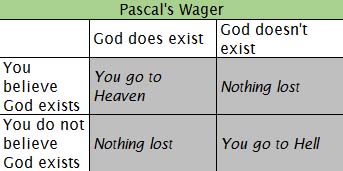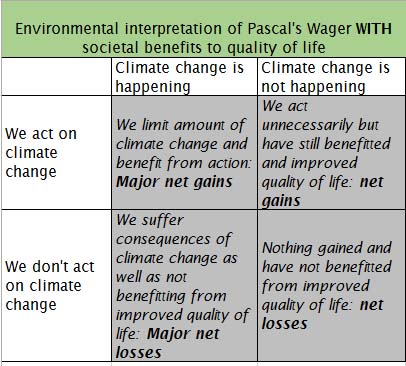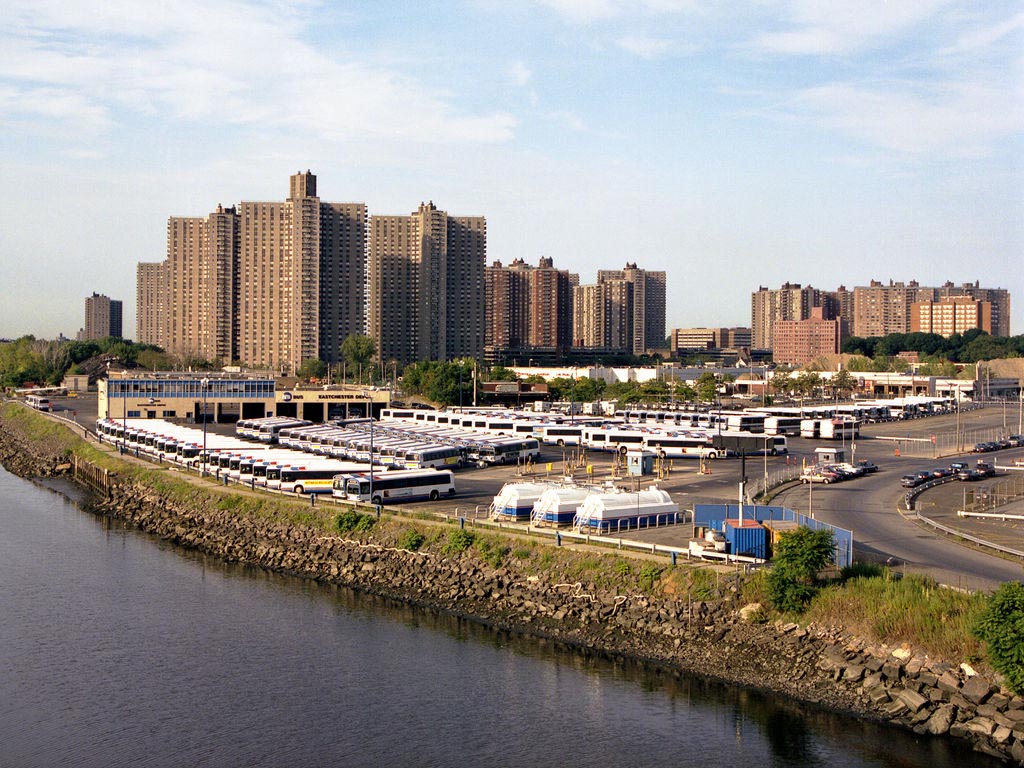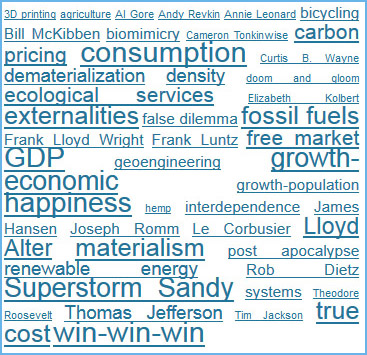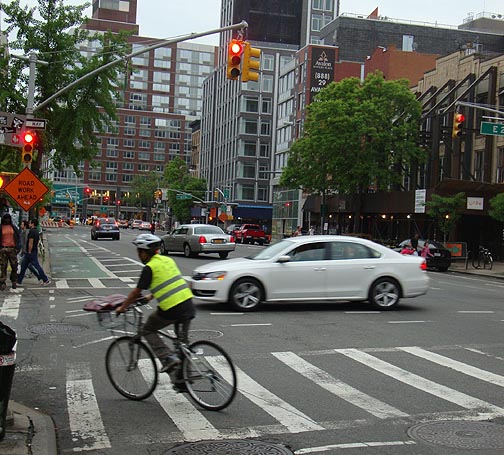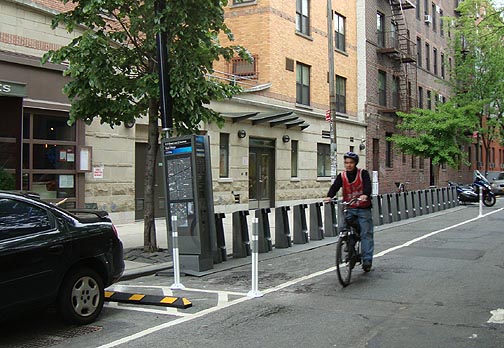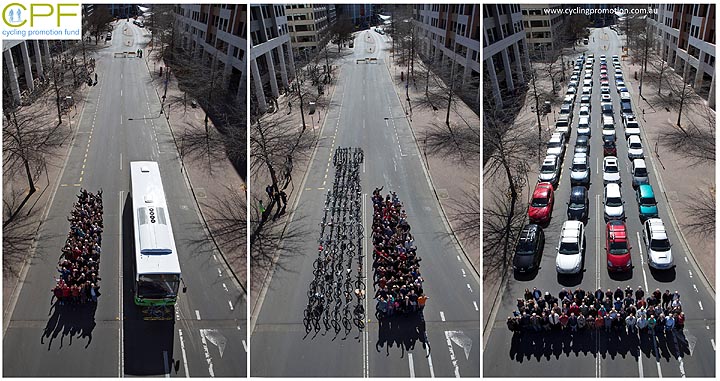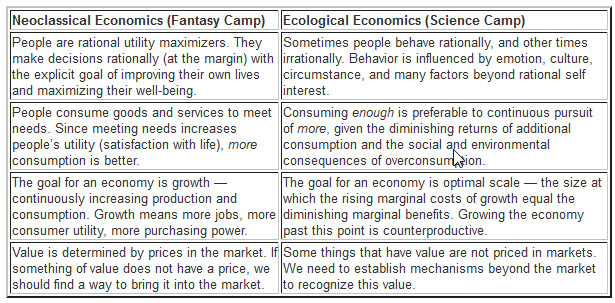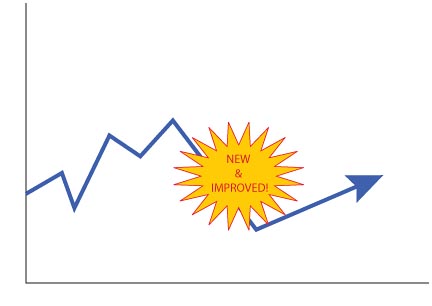Amidst some intense deadlines, I’d started a couple of EcoOptimism posts in the past few weeks, and then discarded them because they weren’t, well, optimistic.
In my EcoOptimist-in-chief role, I sometimes find myself in a hypocritical position when I rail on a topic without presenting at least the silver lining. So I canned the critique of a new chair that was eco but, in my opinion anyway, quite ugly and counterproductive to the perception of ecodesign. And I bit my digital tongue when I began a rant on yet another round of climate deniers’ contorted and illiterate BS.
My malaise was released the other day when, concurrent with the completion of a major deadline, I attended a talk with green business expert Hunter Lovins. A prolific author and speaker, Lovins keynoted a New School student–organized event called (and I’ll try to reign in my non-EcoOptimist snarkiness here) Sustainapalooza.
The gist of Lovins talk was a twist on the old phrase “what’s good for GM is good for the country,” modernizing it into “what’s good for the environment is good for business.” Or to put it the other way around, in Lovins’ words, “the assault on the environment is also an assault on the economy.” Citing sources and businesses including the Harvard Business Review, Unilever and even Goldman Sachs, she emphasized that companies focusing on environmental performance are also leading in economic performance, particularly in the long run. (That long run vision is strengthened, as Lovins noted, by the decision of people such as Paul Polman of Unilever to stop filing quarterly reports, a policy I’ve long advocated since the pressure of quarterly reports only serves to encourage short term thinking at the expense of looking at the bigger picture.)
Central to her talk was what she and John Fullerton have labeled The Regenerative Economy or, as they titled it in their FastCo article last fall, “transform[ing] global finance into a force for good.” In its current state, she explained, “our economy has become a financial system that expects human beings to serve its dictates and desires, rather than serving basic human needs and delivering prosperity in ways that can long endure.” In other words we work for the financial system instead of the financial system working for us. The needs of the financial system determine the economy, which determines the impacts on the planet when it should be the other way around.
Lovins cited a plethora of stats that support the premise of EcoOptimism:
- A greener economy could create between 15 million to 60 million jobs worldwide over the next two decades. It represents a potential $10 trillion dollar economy.
- The regenerative energy economy employs almost 3 million people TODAY – more than fossil fuel.
- Green jobs increased five times faster than jobs in any other industry
- Switching to renewables will cost 2% – 6% of world GDP – a bargain compared to the 20% of GCP that climate change impacts will amount to.
- Companies in the Dow Jones sustainability Index outperform the general market.
Lovins’ talk was not without realism. She referenced the conventional business stance and the political climate (or would that be anti-climate?). And she criticized herself. “If I was any damn good at this,” she commented, we’d have made more progress. That’s unfair self-criticism, I’d say, being as she’s far from the only one who’s been unable to break our socio-political quagmire. But let’s not detract from the optimism here by diving back into that topic.




